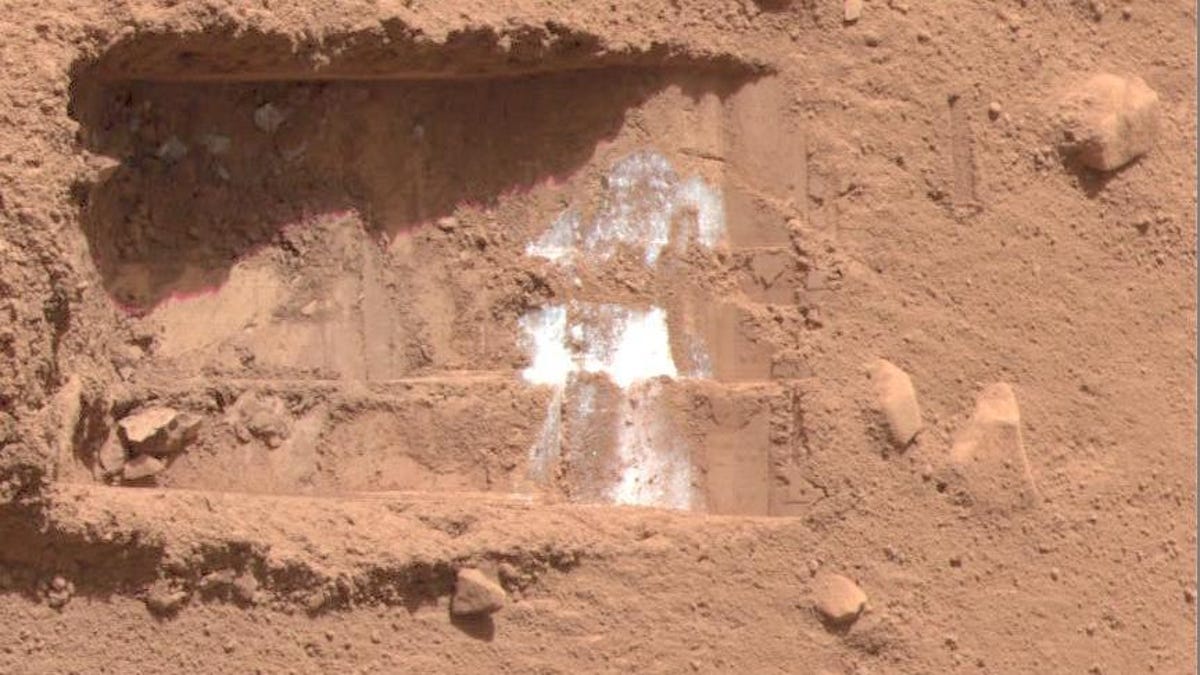Mars snow is dusty, and might even melt into liquid water
Dusty, dark Mars ice could suck up solar energy and maybe even get a little melty.
Back in 2008, NASA made a big announcement that its Phoenix lander had confirmed water ice near the surface of Mars. A team of researchers has taken a new look at what Phoenix found, combined it with data from NASA's Mars Reconnaissance Orbiter, and used computer simulations to better understand the dustiness of the ice and what that can tell us about Mars' climate history.
Not surprisingly, Mars snow has dust mixed into it. "The dustier the ice is, the darker and thus warmer the ice gets, which can affect both its stability and evolution through time," Arizona State University said in a statement last week. "Under certain conditions, this might also mean that the ice could melt on Mars."
The team's paper on the Martian ice has been accepted for publication in the Journal of Geophysical Research: Planets.
"There is a chance that this dusty and dark ice might melt a few centimeters down," said planetary scientist Aditya Khuller, lead author of the paper. "And any subsurface liquid water produced from melting will be protected from evaporating in Mars' wispy atmosphere by the overlying blanket of ice."
The research points to the ice investigated by Phoenix coming from dusty snowfall sometime over the last million years. It will require further work to determine if the ice might actually melt into liquid water, but it's an intriguing idea.
Understanding water on Mars is key to understanding the chances the red planet might have once hosted microbial life. Current-day Mars is dry, dusty and very cold, which makes it pretty inhospitable, though a study earlier this year suggested Earth microbes might be able to survive on Mars temporarily.
Ice on Mars could also be important for future human visitors who will need water resources. In 2019, NASA released a "treasure map" of water ice that could potentially be reached by astronauts.
The history of water on Mars is complex and often mysterious. Some recent studies had suggested there might be hidden briny lakes at the planet's south pole, but newer evidence argues they might actually be frozen clays. NASA's Perseverance rover is currently checking out a former lakebed in the Jezero Crater in a search for signs of ancient microbial life.
The new study on Martian snow and its dustiness gives scientists one more piece to place into the larger puzzle of Mars water. Could there be pockets of puddles on Mars? Perhaps. You might want to pack a straw just in case.
Follow CNET's 2021 Space Calendar to stay up to date with all the latest space news this year. You can even add it to your own Google Calendar.


